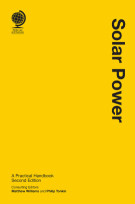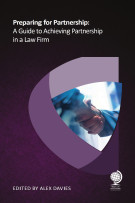
What is sukuk?
One of the most striking features of the recent growth in Islamic finance has been the development of the market for issuance of sukuk. This is the Shariah product used to access the capital markets and is generally, if erroneously, referred to as the 'Islamic bond'. Strictly speaking, a sukuk is not a debt product at all. Rather, a sukuk is a certificate which represents a proportional beneficial ownership in the asset underlying an Islamic finance transaction and gives the sukuk holder a right to receive a pro rata portion of the income stream of the underlying transaction.
Another way of looking at it is to see the sukuk as a capital markets overlay to an underlying Islamic structure. In that regard, it is clear that for a corporate to consider issuing a sukuk, it must be able to satisfy certain essential criteria in relation to compliance with Shariah principles. To begin with, the company must not engage in any haram ('forbidden') activity. Beyond that, the sukuk issue itself must be structured to ensure adherence to Islamic principles. Perhaps the most famous of these is the banning of any interest (riba), although profit is very much encouraged, as is risk sharing. One other major criterion is that an issuer must own the asset or assets it intends to utilise in any particular financing structure.
The sukuk is nevertheless a highly flexible product. The Accounting & Auditing Organisation for Islamic Financial Institutions (AAOIFI)lists 14 authorised types of sukuk, ranging from the familiar ijara (sale and leaseback) and sukuk al musharaka (joint venture-based issues, a particular feature of the Malaysian market), to more esoteric structures such as sukuk al-muzra’a (allowing sukuk holders to a share of the produce of agricultural land) or sukuk al-muqarasa (land and trees/crops). In the brief history of the market to date, it is the ijara structure which has featured most prominently.
The sukuk market is estimated to grow to approximately $150 billion by 2010. Over the years the sukuk market has become more diversified, with new categories of issuer and more complex structures being used (securitisation and convertibles in particular). Historically, sovereign sukuk, serving as benchmarks, were immediately absorbed by the market and demand has switched to alternative issuers of sukuk (banks, corporates and structured). The market has diversified away from the Asian local currencies and US dollar, and offers more alternatives and diversification.
Why would you consider issuing a sukuk?
One of the key reasons for approaching the sukuk market for an issuer is to diversify its investor base by tapping the growing investment liquidity in the Islamic finance market. This is an important way to establish relationships in new markets, as well as creating a reference point for similar future financings. Issuers may also be driven by a desire to develop Islamic finance capabilities on a long-term basis and this latter aspect is very much to be encouraged.
As mentioned above, standard structures are increasingly available, while the recent re-pricing of the conventional market as a result of the ongoing global financial crisis now means that pricing for sukuk issues is now in line with conventional financing – not something that could be said of the market two years ago. In addition, execution costs and timelines are getting closer to conventional funding, while increased secondary market liquidity in recent months is a positive sign of increasing transparency in the Islamic capital markets - which will of course allow issuers to get a far more accurate secondary market price.
How has the market been recently?
Islamic capital markets have grown significantly, attracting more issuers from a larger number of countries and sectors and in different currencies. This demonstrates the availability of the market to a wide range of issuers. The sukuk and syndicated Islamic finance markets have grown by more than 60% since the beginning of the decade. Despite the fall in issuance in 2008 due to the global financial crisis, primary markets are expected to pick up again in the fourth quarter of 2009 and the first quarter of 2010, with a transaction pipeline estimated at $40 billion. The way back to more active market levels has been a spate of highly successful sovereign and quasi-sovereign issues, with heavily oversubscribed benchmark issues by Indonesia and Bahrain leading the way.
How has Islamic finance been affected by the global financial crisis?
The direct impact of the crisis was initially limited as Islamic banks had no 'toxic' assets on their balance sheet. However, because of the (to be encouraged) interaction of the conventional and Islamic banks – particularly with regard to funding and deposits – there has been a noticeable tightening of liquidity among Islamic banks in 2009. In addition, there is significant exposure to corporate defaults in the Gulf region and continuing fallout to overexposure to overheated real estate projects.
The prospects for a speedy recovery are strong, however, with the Gulf region expected to bounce back quickly given the recovery in the oil price and the continuing resilience of the Asian markets, which will benefit key Islamic hubs such as Kuala Lumpur, Singapore and Hong Kong.
How does sukuk issuance vary globally?
There is an increasing degree of standardisation in global issuance, due in large part to the near-universal acceptance of the AAOIFI standards, and ongoing edicts. There are also, however, well-known differences between various schools of Islamic thought - most noticeably, the differing treatment of one or two structures among Gulf scholars and those in Southeast Asia, which leads to some Malaysian issues, for example, not being able to be sold into the Gulf countries. The key point for a corporate issuer in Europe is, accordingly, to follow what is acceptable to the Gulf scholars, because then it can be confident of being able to find investors in Southeast Asia for which such structures will be acceptable.
What are the prospects for corporate issuance?
The prospects for corporate issuance in Europe remain strong, as many potential issuers are exploring all potential avenues for alternative financing solutions to the predicament created for them by the illiquidity of the traditional relationship banking sector. The pathfinding efforts in the United Kingdom are well documented, with a level playing field having now been created to allow corporate issuers to tap the sukuk market with the same tax treatment that would apply to the issuance of a conventional bond.
Momentum in continental Europe is also gathering pace, as France gears up its own Islamic finance initiative. The first round of legislative changes passed into law during 2008, with more to follow swiftly.
All in all, the prospects for global Islamic finance are strong, with a resilient sector eager to provide financing solutions to an ever-increasing number of potential issuers and investors.







